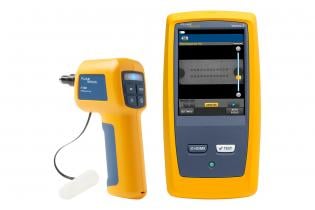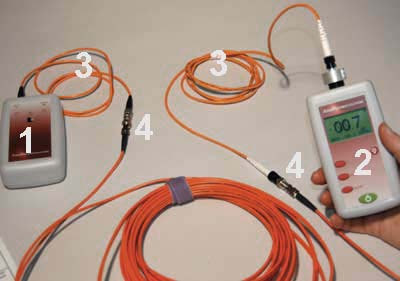High-quality ofda systems deliver precise fibre testing and consistent results.
High-quality ofda systems deliver precise fibre testing and consistent results.
Blog Article
Discover the Importance of Optical Fibre Testing in Modern Telecom
In the realm of modern-day telecoms, the significance of optical fibre testing can not be overemphasized, as it offers as the backbone for making certain network integrity and efficiency. By executing routine testing methods, drivers can preemptively identify possible issues such as signal deterioration, hence protecting against disturbances that can confirm expensive. Advanced methods like Optical Time-Domain Reflectometry play a critical function in this process, yet many may ignore the more comprehensive effects of these practices. What are the certain benefits that regular testing deals, and exactly how might it shape the future landscape of telecoms?

Recognizing Optical Fiber Screening
Optical fibre testing is an essential procedure in telecommunications that guarantees the integrity and performance of fiber optic networks. This screening encompasses a variety of treatments designed to review the physical and useful features of optical fibers - ofda. Key parameters assessed consist of optical power loss, data transfer ability, and mistake location, which are essential for preserving premium communication links
The testing procedure typically includes making use of specific tools such as Optical Time-Domain Reflectometers (OTDR) and Optical Power Meters. OTDRs are used to recognize and identify mistakes, interlaces, and connectors within the fibre, while power meters determine the transmitted light signal stamina to identify performance.
Additionally, screening is carried out at different stages, consisting of during installment, maintenance, and troubleshooting, to ensure that the network fulfills industry standards and functional demands. Conformity with criteria set by companies like the International Telecommunication Union (ITU) and the Telecommunications Market Association (TIA) is vital.
Advantages of Routine Testing
Routine testing of optical fibers yields countless advantages that considerably enhance network integrity and efficiency. One of the key advantages is the early detection of potential problems, such as breaks or degradation in the fiber, which can cause pricey downtime if left unaddressed (fibre testing equipment). By determining these troubles proactively, telecommunications providers can reduce solution interruptions and guarantee consistent connection for their consumers
Furthermore, normal screening aids to keep the honesty of signal high quality. As optical fibers age, their efficiency can be impacted by factors such as ecological conditions and physical stress. Regular evaluations enable the monitoring of signal loss and general transmission effectiveness, making sure that the network operates at optimum degrees.
Another substantial advantage is conformity with sector requirements. Routine screening supports adherence to regulative requirements, consequently alleviating legal and economic dangers linked with non-compliance. It improves the total lifespan of the fiber framework by promoting timely maintenance and fixings.

Typical Evaluating Approaches
Evaluating optical fibres employs different methods to make certain the stability and performance of telecoms networks. Amongst one of the most typical methods is Optical Time Domain Name Reflectometry (OTDR), which analyzes the whole length of the fiber by sending a pulse of light and measuring the reflections caused by blemishes or breaks. This method gives detailed details concerning the location and seriousness of mistakes.
One more prevalent optical fibre diameter analyser method is making use of Optical Power Meters, which determine the quantity of light transferred with the fibre. This method helps establish the loss of signal toughness, making sure that it meets sector requirements. Additionally, Visual Fault Locators (VFL) are used to determine breaks or extreme bends in the fiber by forecasting a visible laser light into the cord.
Insertion loss screening is likewise critical, as it measures the loss of signal power arising from connections and entwines within the network. The usage of Polarization Mode Diffusion (PMD) screening evaluates the effect of fiber features on signal stability.
Each of these methods plays an important role in preserving the performance and dependability of optical fibre networks, eventually adding to smooth telecoms operations.
Influence On Network Performance
The honesty and performance of optical fibre networks directly influence general network efficiency. In contemporary telecoms, the performance of data transmission depends greatly on the quality of the optical fibres made use of. Any type of degradation in the fibre's condition-- whether because of physical damages, contamination, or too much bending-- can lead to increased attenuation and signal loss, substantially affecting information stability and speed.
Routine optical fibre testing is important to determine and remedy possible problems before they materialize as network failings or stagnations. Strategies such as Optical Time Domain Reflectometry (OTDR) and insertion loss screening allow service technicians to measure the efficiency of fibre links accurately. These examinations not only examine the physical problem of the fibers yet likewise ensure compliance with industry criteria, consequently safeguarding the network's reliability.
Additionally, a well-maintained optical fiber network adds to lowered operational expenses and improved consumer satisfaction, as end-users experience fewer disturbances and greater data prices. Ultimately, the focus on strenuous optical fiber testing practices serves as a cornerstone for sustaining robust telecoms facilities, making sure that service providers can satisfy the expanding needs for transmission capacity and connection in today's electronic age.
Future Trends in Checking
As we look ahead, improvements in innovation are poised to reshape optical fibre testing in telecoms. The rise of automation and expert system (AI) is anticipated to improve the efficiency and accuracy of screening processes. Automated testing systems can perform thorough assessments with very little human treatment, considerably decreasing the possibility for errors and expediting time-to-deployment.
Additionally, the integration of see page maker understanding algorithms will certainly make it possible for anticipating upkeep, enabling network carriers to anticipate possible problems before they rise into failures. This positive strategy not just improves network dependability yet also maximizes functional expenses.
Another emerging trend is the development of portable screening devices that provide real-time evaluation - ofda. These a knockout post devices will empower service technicians to execute on-site diagnostics rapidly, assisting in quicker resolutions and enhancing solution top quality
The expansion of 5G networks better requires the advancement of testing techniques. As bandwidth needs increase, traditional testing techniques might no more are sufficient. Innovative options such as optical time-domain reflectometry (OTDR) and progressed spectral analysis will become critical in ensuring the honesty and efficiency of high-speed links.

Conclusion
To conclude, optical fiber testing is necessary for guaranteeing the integrity and reliability of modern-day telecommunications networks. Regular testing methods not only help determine potential problems such as signal loss and faults but additionally add to improved network efficiency and customer satisfaction. As the demand for seamless connectivity continues to expand, the adoption of innovative testing techniques will certainly play an essential function in maintaining high-quality network standards and supporting the developing landscape of telecommunications.
Report this page